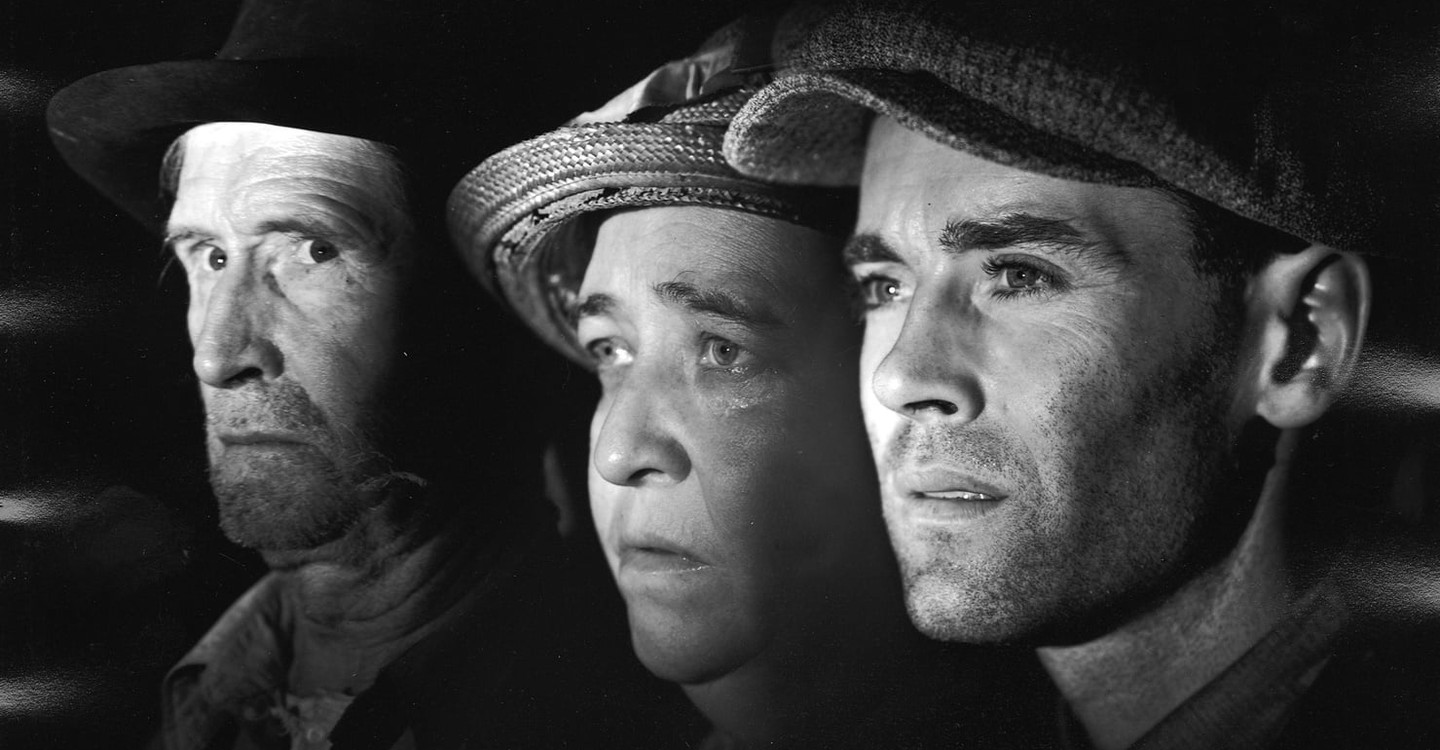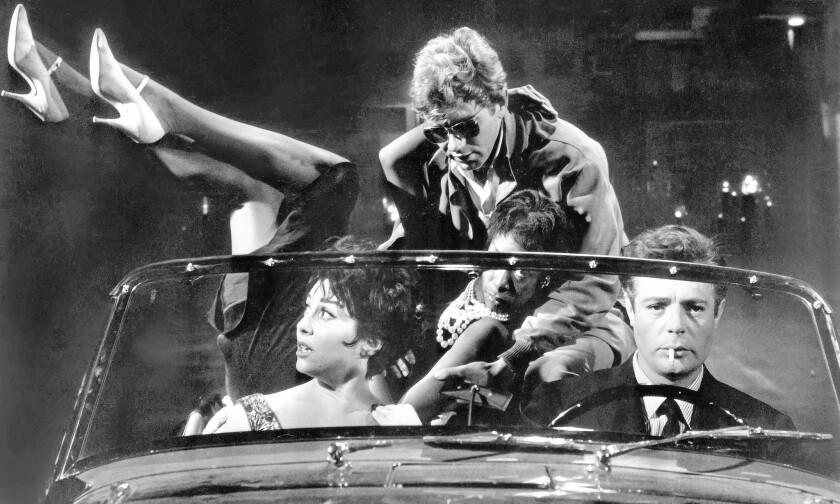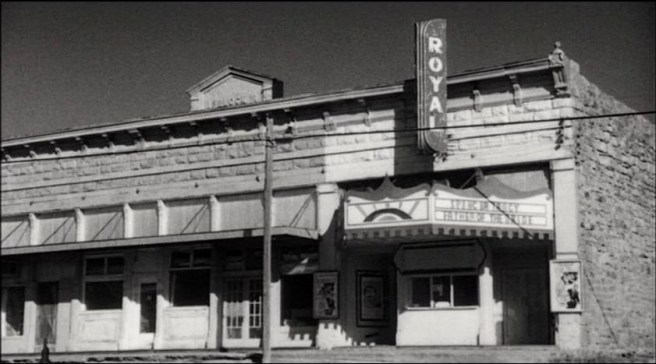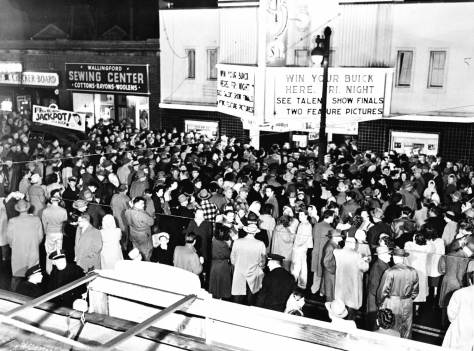
Herman J. Mankiewicz: Irving [Thalberg], you are a literate man. You know the difference between communism and socialism. In socialism, everyone shares the wealth. In communism, everyone shares the poverty. […]
Mankiewicz [In a later scene, referring to his dinner host William Randolph Hearst] …he’s EXACTLY what our Don used to be! An idealist, ya get it? And not only that, his nemesis [gubernatorial candidate Upton Sinclair] is the same guy who once predicted that our Quixote would one day preside over a socialist revolution. Our Quixote looks into the mirror of his youth and decides to break this glass, a maddening reminder of who he once was. [Pointing at fellow dinner guest Louis B. Mayer] Assisted by his faithful Sancho.
– from Mank, screenplay by Jack Fincher
Russ Brissenden: I’m warning you, Martin…don’t waste time. How many people do you see starve to death or go to jail because they are nothing else but wretches, stupid and ignorant slaves? Fight for them, Martin. Fight for socialism.
Martin Eden: You and I have nothing to do with socialists! Yet you insist on spending time with them!
Russ Brissenden: Socialism is inevitable. The slaves have now become too many. Anything is preferable to the pigs that govern now. Socialism will give a sense to your writing, Martin. It might be the only thing that will save you from the disappointment that’s approaching.
Martin Eden: What disappointment? [End scene]
– from Martin Eden, screenplay by Maurizio Brariucci & Pietro Marcello
It is tempting to suggest that, aside from the fact that David Fincher’s Mank and Pietro Marcello’s Martin Eden are films about writers (the former a real-life figure and the latter a fictional character), they are also both “about” socialism. But they are not really, at least not in any didactic way. I will venture to suggest that they do merge in a tangential way, with a minor fender-bender at the intersection of Jack London and Upton Sinclair.
I came to this ‘epiphany’ in my usual bumbling fashion. Being a lazy bastard, I have been putting off writing a review of Mank (which has been available on Netflix since early December). This time of year, less screener links come my way than usual (even publicists need a holiday break, I suppose), so with nothing new to cover this week I went for the low-hanging fruit, planning to devote this post to Mank. Murphy’s Law being what it is, I was offered a crack at Martin Eden, a film I had already been intrigued to see.
Martin Eden is based on Jack London’s eponymous novel. I admit I have never read it, which may have worked in my favor, as I went into it with no expectations and an open mind. Good thing too, as I gather that some London purists are upset that the director and co-writer Maurizio Braucci transposed a tale originally set in early 1900s America to an unspecified (mid to latter?) 20th-Century period in Italy, chockablock with anachronisms.
When we are introduced to the strapping Martin (Luca Marinelli) he’s a drunken sailor pulling an all-night pub crawl, boning and grogging his way down the waterfront and sleeping it off al fresco. When he awakens, he espies a slightly built young man getting bullied by a goon and springs to his rescue. The grateful Arturo (Giustiniano Alpi) invites Martin to have breakfast with his family, who turn out to be well to-do. This is where Martin meets Arturo’s pretty sister Elena (Jessica Cressy) who will be the love of his life.
The directionless (and penniless) Martin is enthralled and fascinated not only by Elena’s loveliness, but her education and refinement. Intuiting that his uneducated proletarian upbringing puts him out of her league, he decides then and there to become a man of letters, come hell or high water. Initially, Elena’s interest does not lean toward amour, but she is not immune to Martin’s innate charm. She also senses his natural intelligence; so, she begins to tutor him, encouraging him to expand his intellect (not unlike My Fair Lady, except in this scenario…Elena is Professor Higgins, and Martin is Eliza Doolittle).
Martin begins to write in earnest. At a soiree hosted by Elena’s family, Martin recites one of his poems, to polite applause. One of the guests is Russ Brissenden, an older gentleman of mysterious means. The straight-talking Brissenden tells Martin his poem had substance and was not appreciated by the bourgeoisie guests. Brissenden, a Socialist and writer himself, becomes a mentor, encouraging Martin to write about what he knows.
Eventually Martin and Elena’s relationship does develop into full-blown romance. However, when Martin tells her that he has decided to pursue writing as a living, he is puzzled and hurt when she tells him that the subjects that he chooses to write about are too “raw” and “real” and do not offer enough “hope” to people. She implies that if he does not find a trade to fall back on, she is afraid they will never be able to get married.
Martin goes to Brissenden for counseling. When Brissenden tells him that he needs to forget about pleasing Elena (bluntly referring to her as an “idiot”) and reset his priorities to focus solely on finding his voice as a writer, Martin sees red and physically attacks Brissenden. He immediately apologizes, as he now sees that Elena’s harsh appraisal of his work was not constructive criticism, so much as it was her outing herself as a classist.
In a narrative jump 2/3 of the way through, Martin has not only found his voice as a writer, essayist, and poet, but fame and fortune as such. He is also cynical, apolitical, and indifferent to success. He’s given most of his money away; mostly to those who helped him when he was struggling. At a public event, he sneeringly refers to himself as a “hoodlum and a sailor” to adoring fans. We get a sketch of Martin’s wilderness years between his breakup with Elena and achieving world acclaim, but with no explanation given for his apparent descent into a chronic state of existential malaise and self-loathing.
For the final third of the film, Martin tap-dances willy-nilly around the edges of the time-space continuum like Billy Pilgrim in Slaughterhouse-Five. In one scene, he watches a group of Fascist black shirts enjoying recreation at the beach. There are references to an imminent “war” involving Italy during what appears to be the late 70s…but then we see a vintage newsreel of a Nazi book burning in the 1930s. It is artfully constructed, which I suppose injects lyricism into Marcello’s film, but it somehow feels like window dressing.
Then again, if I may jump ahead and steal a line from Mank: “You cannot capture a man’s entire life in two hours; all you can hope is to leave an impression of one.” On the plus side, despite its overreaching themes Martin Eden is a pleasing throwback to class struggle dramas from the 60s and 70s like Visconti’s The Leopard and Bertolucci’s 1900.

Regarding Upton Sinclair. He and Jack London were not only contemporaries, but mutual admirers of each other’s writings. Before he wrote The Jungle, the 1906 novel that put him on the map, Sinclair (who had over 90 books to his credit by his death in 1968 at the age of 90) is said to have been greatly influenced by People of the Abyss, London’s 1903 book about the slums of London’s East End. And here’s what London said of The Jungle:
“Dear Comrades: . . . The book we have been waiting for these many years! It will open countless ears that have been deaf to Socialism. It will make thousands of converts to our cause. It depicts what our country really is, the home of oppression and injustice, a nightmare of misery, an inferno of suffering, a human hell, a jungle of wild beasts.”
That sounds awfully close to the kind of book that the (fictional) Socialist Russ Brissenden would love to see his (fictional) protégé Martin Eden write. Not a stretch, considering London was a Socialist. In fact, he and Sinclair were charter members of the Intercollegiate Socialist Society. Founded in 1905, the I.S.S. had a stated purpose to “throw light on the world-wide movement of industrial democracy known as socialism.”
But what’s most interesting about Martin Eden (commonly assumed to be a semi-autobiographical work), is that its protagonist rejects Socialism outright. According to Wiki, in the copy of the novel which he inscribed for Upton Sinclair, London wrote, “One of my motifs, in this book, was an attack on individualism (in the person of the hero). I must have bungled it, for not a single reviewer has discovered it.” And so it goes.

For a guy who has been dead for 53 years, Upton Sinclair sure gets around a lot these days. Admittedly he has but a spectral “presence” in the margins of Martin Eden (as I explained above) but he gets a cameo and maybe a quarter-page of dialog in David Fincher’s Mank. Well, “he” as in a reasonable facsimile, in the person of Bill Nye the Science Guy. Nye portrays Sinclair delivering a speech in his iteration as a politician, when he ran for Governor of California in 1934 (he ran as a Democrat and lost the race).
However, the focus of David Fincher’s Mank is Herman J. Mankiewicz – Hollywood screenwriter, inveterate gambler, world-class inebriate, and born tummler. More specifically, it is a (more-or-less accurate) chronicle of the part he played in the creation of Orson Welles’ 1941 classic Citizen Kane. Which reminds me of a funny story.
Back in 2007, I published a review of a film wherein I innocuously referenced to The Princess Bride as “Rob Reiner’s The Princess Bride.” At the time, Hullabaloo readers were able to comment on posts. Man, did I ever release the Kraken with that one. To say that I was beset upon is understatement. “ROB REINER’S The Princess Bride?! Ingrate! Philistine! Aren’t you aware that William Goldman wrote the screenplay?!” Yes, I was.
This sparked a lively discussion on “whose” film it was. Call me madcap, but I’m sure I’ve read and heard the phrase “Nicholas Ray’s Rebel Without a Cause” many more times than the phrase “Stewart Stern’s Rebel Without a Cause” (as in never!). Of course I realize there’s no film without a screenwriter. And I’m also aware there are films written and directed by the same person. I just never got the memo about these shorthand “rules”.
So is it “Orson Welles’ Citizen Kane”? Or is it “Herman J. Mankiewicz’s Citizen Kane”?
In his ambitious attempt to answer that million-dollar question in just over two hours, Fincher, armed with a sharp and literate screenplay by his late father Jack Fincher (who passed away in 2003; I’d hazard that this project was in development for a spell) has layered his biopic with enough Hollywood meta to make even Quentin Tarantino plotz.
The story opens in 1940, by which time Mankiewicz (Gary Oldman) has burned his bridges in Tinseltown, thanks to his sharp tongue and love of the bottle. Despite this (or perhaps he is attracted by Mank’s budget-friendly mix of writing prowess and financial desperation), Welles (Tom Burke) recruits him to write a screenplay for his first film. Welles, with a commanding and formidable presence that belied his 24 years, was a hard man to say “no” to. He had already made a splash in radio and theater and had just signed an unprecedented contract with RKO which gave him full creative control of his projects.
Mank is convalescing from an auto accident that has left him bedridden with a broken leg. Welles has set him up at an isolated ranch house in Victorville, California, where Mank dictates his screenplay to his British secretary (Lily Collins). In a slightly cruel but pragmatic move, Wells has also provided Mank with a cabinet full of liquor (surreptitiously laced with Seconal) at the foot of the bed…out of reach. This dangles a carrot for motivation to heal up and focus on writing, but also (sort of) guarantees rationing.
Welles enlists his producer John Houseman (Sam Troughton) to make house calls to keep tabs on Mank’s progress with the script (which eventually tops 300 pages, much to Houseman’s chagrin). As Mank toils on his tome, flashbacks to the 1930s are cleverly interwoven to tell both the story of Mank’s mercurial career in the Hollywood studio system, as well as illustrate how his equally mercurial acquaintanceship with newspaper mogul William Randolph Hearst (Charles Dance) and Hearst’s lover, actress Marion Davies (Amanda Seyfried) provided the grist for creating the characters in Citizen Kane. (in the event Citizen Kane remains unchecked on your bucket list, that would be the one where “Charles Foster Kane” unquestionably rhymes with “William Randolph Hearst”).
Film buffs who have given Citizen Kane a spin will enjoy playing “spot the visual quote”, as Fincher has festooned them throughout (nice B&W photography by Erik Messerschmidt adds to the verisimilitude). The elder Fincher’s script gives the characters much to chew on, particularly Oldman, who merrily fires off Mank’s droll barbs with deadly accuracy. Fine work by a large cast that includes Ferdinand Kingsley (as Irving Thalberg), Arless Howard (as Louis B. Mayer), Tom Pelphrey (as Mank’s brother Joseph) and Tuppence Middleton playing Mank’s long-suffering but devoted wife Sara.
As far as resolving “whose” film Citizen Kane is…here’s one take, from a recent BFI essay by the always insightful Farran Smith Nehme (who blogs as the Self-Styled Siren):
Herman had a wealth of pent-up ideas – about lonely boyhoods, about newspapermen, about loyalty and hubris. Over the course of his stay in Victorville, Mankiewicz poured it all into 325 pages of a script called ‘American’, the extravagant title seeming to confirm that there was too much material for one movie to contain. In Mank, brother Joe tells him: “It’s the best thing you’ve ever done,” and for Herman, the confirmation is already superfluous.
Mank shows that Herman had signed a contract and accepted a bonus on the condition that Welles would get sole credit, but once the work is done, Herman reneges. The movie implies that in this instance, it was Welles punching up the script: “I’ll just run it through my typewriter,” he tells Herman.
People who revere Citizen Kane can choose whether or not to accept this scenario. Those who have read scholars such as Robert Carringer and Harlan Lebo excavating the surviving scripts and records at RKO, or essays by Joseph McBride or Jonathan Rosenbaum on the topic, almost certainly won’t.
In his 1978 biography, also titled Mank, Richard Meryman estimated Herman’s contribution to the final Kane script at 60 per cent, plus revisions he contributed later. Critic Pauline Kael, in her essay “Raising Kane”, put it at virtually 100 per cent, which even John Houseman said went too far. Houseman added, more to the point, that Citizen Kane “is Orson’s picture just as Stagecoach is John Ford’s picture, even though Dudley Nichols wrote it”.
Rule of thumb? Give credit where credit is due…when practical. Welles summed it up best when he said: “A writer needs a pen, an artist needs a brush, but a filmmaker needs an army.”
Previous posts with related themes:
More reviews at Den of Cinema
—Dennis Hartley













































